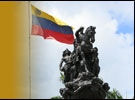«Field of battle Carabobo»
Tiwy.com, February 2007
|
There is a very important historic place in 30 kilometers from Valencia – the valley, in which a decisive battle for gaining the independence of Venezuela from the Spanish crown, took place.
Now, at the place of battle, a majestic memorial «Field of battle Carabobo» (Campo de Carabobo) has been erected. The decision to erect it appeared right after the battle itself. It was on July 20, 1821 when the Congress has promulgated the Decree to immortalize the memory of participants of the great battle. Because of complicated historic events, lack of finances or respective materials erection of the monument has been delayed for many years. The first monument was made of wood. Neither the monument itself nor its description has remained.
Every Venezuelan government made its contribution into construction of the memorial. In 1885, at the 65th anniversary of the battle, the first military parade was held in Carabobo. It has become a tradition since.
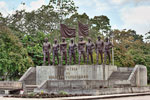 |
|
Statuesque composition «Monument to the Venezuelan soldier», valiant defender of his Motherland independence, opens up the memorial.
|
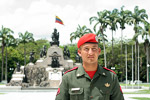 |
|
Wilcar Marquez – a soldier of Venezuela
|
The Alley of Glory, along which there stand steles with bust of heroes, leads to the majestic Triumphal arch.
The Triumphal arch was erected in 1921 to the centennial of the battle. The dates 1821 and 1921 are carved on its columns. The Arch columns are crowned with two female figures that symbolise Peace (Northern column) and Victory (Southern column). Another figure, symbolising Republic, stands in the centre of the Arch. The bas-relieves, depicting the scenes of battle, decorate the Arch.
|
|
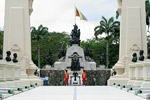 |
|
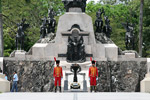 |
|
Under the Triumphal arch there is a Tomb to the Unknown soldier, above which there is an icon-lamp with eternal fire burning. It is interesting to point out that remains of the unknown soldier, who died for the «Great Columbia» in Peru in the battle of Ayacucho (December 9, 1824) rest in the tomb.
|
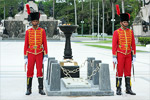 |
|
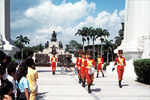 |
|
2 soldiers in the Bolivarian times warriors uniform permanently stand in the guard of honour. In great days the number of guards increases up to 10 soldiers.
Changing of the guards. Photo of 1986.
|
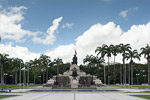 |
|
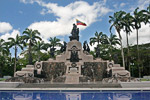 |
|
The Sanctuary of the Fatherland dominates over the wide square behind the Triumphal arch. The statue of Simon Bolivar, who commanded the battle, stands on its top. At its sides are heroes-military leaders - Santiago Mariño, Jose Antonio Paez, Manuel Sedeño and Ambrosio Plaza.
|
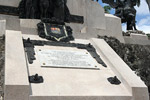 |
|
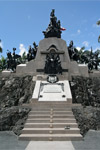 |
|
The bar-relieves of the sanctuary, depicting the scenes of the battle as well as different allegoric figures are very expressive.
|
Two pyramidal columns with mosaic emblems of Spain and Venezuela are at the both sides of the square. The emblems are guarded by resting lions that symbolise power. At the top of the pyramids there are two bronze condors with their wings spread as symbols of equality of the two nations – Spain and Venezuela.
| 
